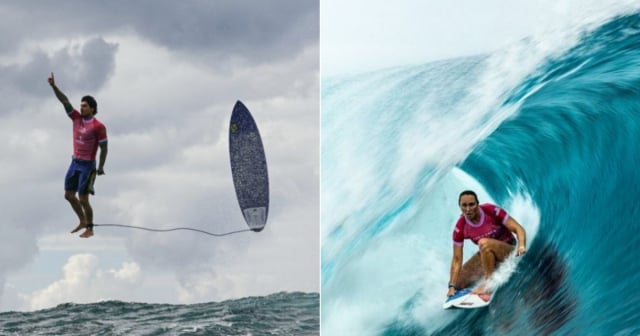This Thursday, a group of Cuban surfers went to the beaches in the west of Havana to enjoy a natural spectacle they hadn't had in years: the large waves following the passage of Hurricane Helene.
The surfing community in Cuba has expressed excitement about this phenomenon, which they describe as a unique opportunity to practice their sport in exceptional conditions.
Videos sent by surfers to the CiberCuba newsroom show impressive waves breaking on the Cuban coast, a rare sight in the country, where surfing has grown in popularity in recent years, despite the difficulties in accessing equipment and the lack of official recognition of the sport.
Helene, which became a category 4 hurricane with extreme winds on Thursday night, affected part of the coast of Mexico, western Cuba, and continues to impact Florida. As it moved north, its wake left perfect conditions for surfing.
More than 20 years without waves of the magnitude of Hurricane Helene.
Experts consulted by CiberCuba claim that waves of this magnitude had not been seen on the island in over two decades. They reached two meters in height and created a perfect tube.
"In Havana, there isn't as much consistency in waves as in the eastern region of the country, which is more exposed to the swells of the Atlantic Ocean. In the capital and the northwestern area, we mainly depend on the swells caused by the winds from cold fronts and hurricanes," explained the consulted source.
He pointed out that hurricanes "generate high-quality waves for surfing because they tend to be long, well-organized, well-formed, and accompanied by offshore wind (land to sea wind). In Havana, surfing is done with onshore wind (sea to land wind), which affects the quality of the waves by disorganizing them. Offshore wind allows the waves generated by hurricanes to reach the shore in a clean and perfect way for surfing."
Some facts about surfing in Cuba
The Santa Fe Surf Club, founded in Havana, celebrated its second anniversary in November 2023 with the goal of popularizing this sport among Cuban children.
The club has faced various challenges, such as the shortage of necessary equipment for practice, due to high costs and a lack of support from the National Institute of Sports (INDER). This group, one of the best-known in Cuba, has fought to raise awareness and promote surfing on the beaches of the country.
In August 2019, a controversy arose when Cuban sports commentator Reinier González claimed that in Cuba and the Caribbean it was practically impossible to surf due to the lack of gigantic waves.
These statements were refuted by several Cuban surfers, who pointed out that there are beaches on the island, such as Santa Fe and Alamar, where surfing is possible. Although this sport is not officially recognized in Cuba, the surfing community continues to advocate for its legalization.
In January 2024, the Santa Fe Surf Club received a donation of surfing equipment, sent from abroad by friends of the club. This gesture significantly contributed to the development of surfing in Cuba, where the lack of proper equipment is one of the main obstacles to its practice.
In May 2022, the documentary "Havana Libre" was released, which tells the story of young Cubans fighting to legalize surfing in Cuba. The film, produced by Makewild Films, showcases how the Cuban government has stigmatized and prohibited surfing, which is considered illegal on the island.
Thanks to the perseverance of the community, surfing has gained recognition, especially after being included as an Olympic sport in Tokyo 2020.
Surfing the waves of Helene
The sea on Thursday afternoon provided a very special moment for surfers in Havana, who took advantage of every minute to be in the water on that day they have considered "historic."
The community of Cuban surfers remains active and united, despite the shortage of wetsuits, boards, fins, grip pads, wax, and other essential items for practicing the sport. In recent years, they have received support from friends and international organizations to be able to grow.
There is still a long way to go, but these surfers do not miss the opportunity to head out to the sea with their boards and enjoy events like the waves left by Hurricane Helene. This reinforces their passion and desire to continue growing within the most well-known water sport in the world.
What do you think?
COMMENTFiled under:
